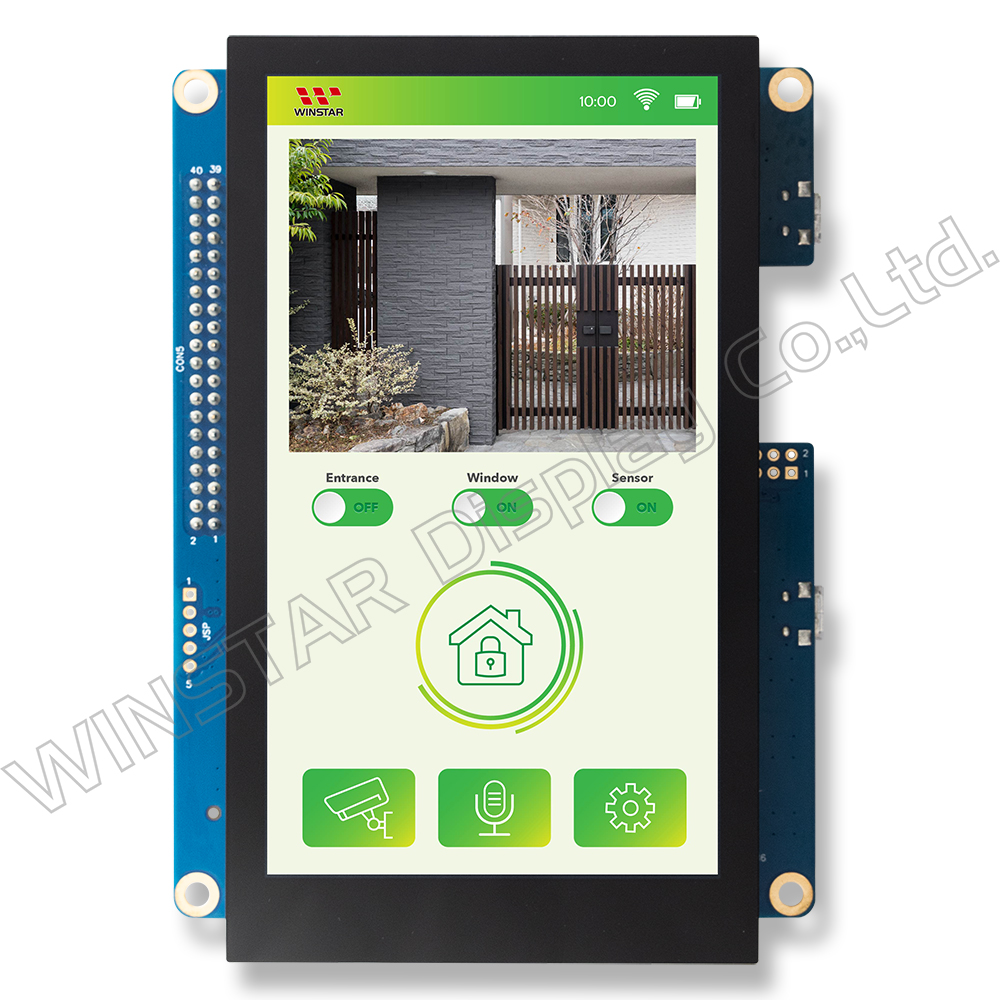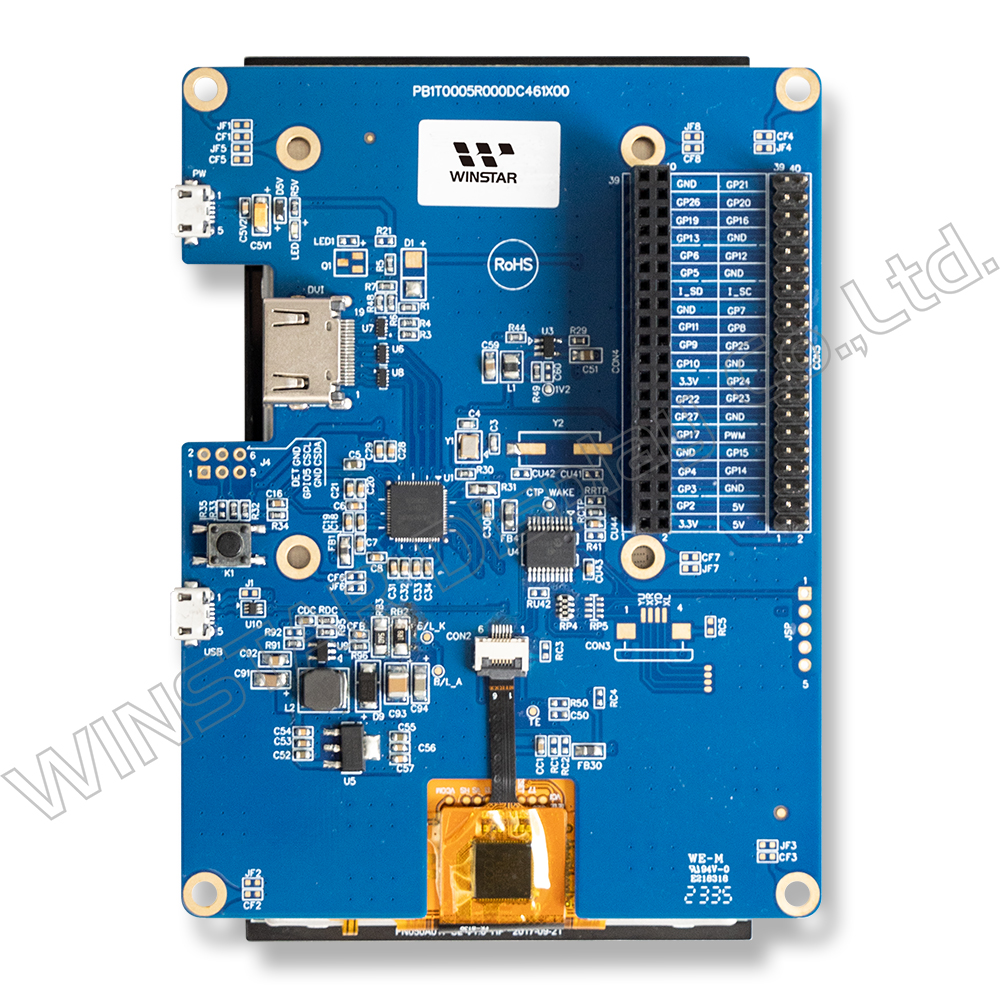WF50DSYF3MHG1V est un module d'affichage TFT-LCD en mode portrait de 5 pouces avec une résolution de 720x1280, prenant en charge les signaux HDMI. La carte de contrôle du module prend en charge l'interface de signal HDMI et peut communiquer via l'interface de signal DVI. Le module dispose également d'un connecteur GPIO à 40 broches, ce qui le rend plus pratique pour les développeurs de Raspberry Pi, et la conception avec plusieurs trous filetés permet aux clients de fixer facilement le module sur leurs produits d'application. Ce module utilise le circuit intégré contrôleur TFT LT6911C.
Le module d'affichage 720x1280 de WF50DSYF3MHG1V dispose d'un panneau tactile capacitif projeté (PCAP) et adopte la technologie de collage optique (OCA), ce qui améliore la robustesse, la résistance aux chocs et aux vibrations, tout en augmentant la résistance aux rayures, empêchant la vapeur d'eau et la poussière de pénétrer dans les composants internes du LCD, et prolongeant la durée de vie du produit d'affichage. L'écran tactile PCAP comprend un circuit intégré GT928 intégré, permettant un toucher à 1 point/2 points/multi-points et prenant en charge une interface USB.
Ce module TFT adopte la technologie IPS, offrant de bons angles de vision, de meilleures performances couleur, moins de distorsion des couleurs (avec des angles de vision de 80 degrés dans toutes les directions), une résolution de 720 x 1280 points, et un rapport d'aspect typique de 16:9, offrant une expérience visuelle claire et vive. Il se vante également d'une luminosité élevée de 900 cd/m² et d'un rapport de contraste élevé de 800:1, assurant une visibilité optimale même dans des environnements lumineux, offrant une expérience visuelle confortable.
WF50DSYF3MHG1V fonctionne dans une plage de température de -20 à +70°C, avec une plage de stockage de -30 à +80°C. La plage de tension d'alimentation est de 4,75V à 5,25V, généralement 5,0V. Son design de 5 pouces en diagonale convient à diverses applications industrielles, notamment les solutions de sécurité domestique (par exemple, les systèmes de contrôle d'accès) et les consoles de mixage (par exemple, console de studio, console live, console de diffusion). Offrant des applications industrielles diversifiées et une excellente fiabilité, WF50DSYF3MHG1V est la solution préférée de nombreuses industries.









